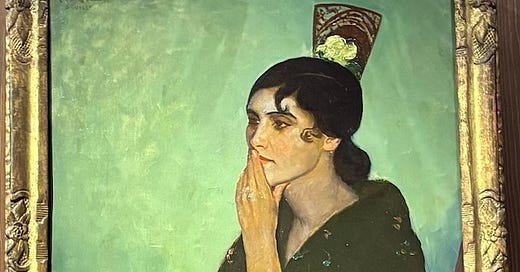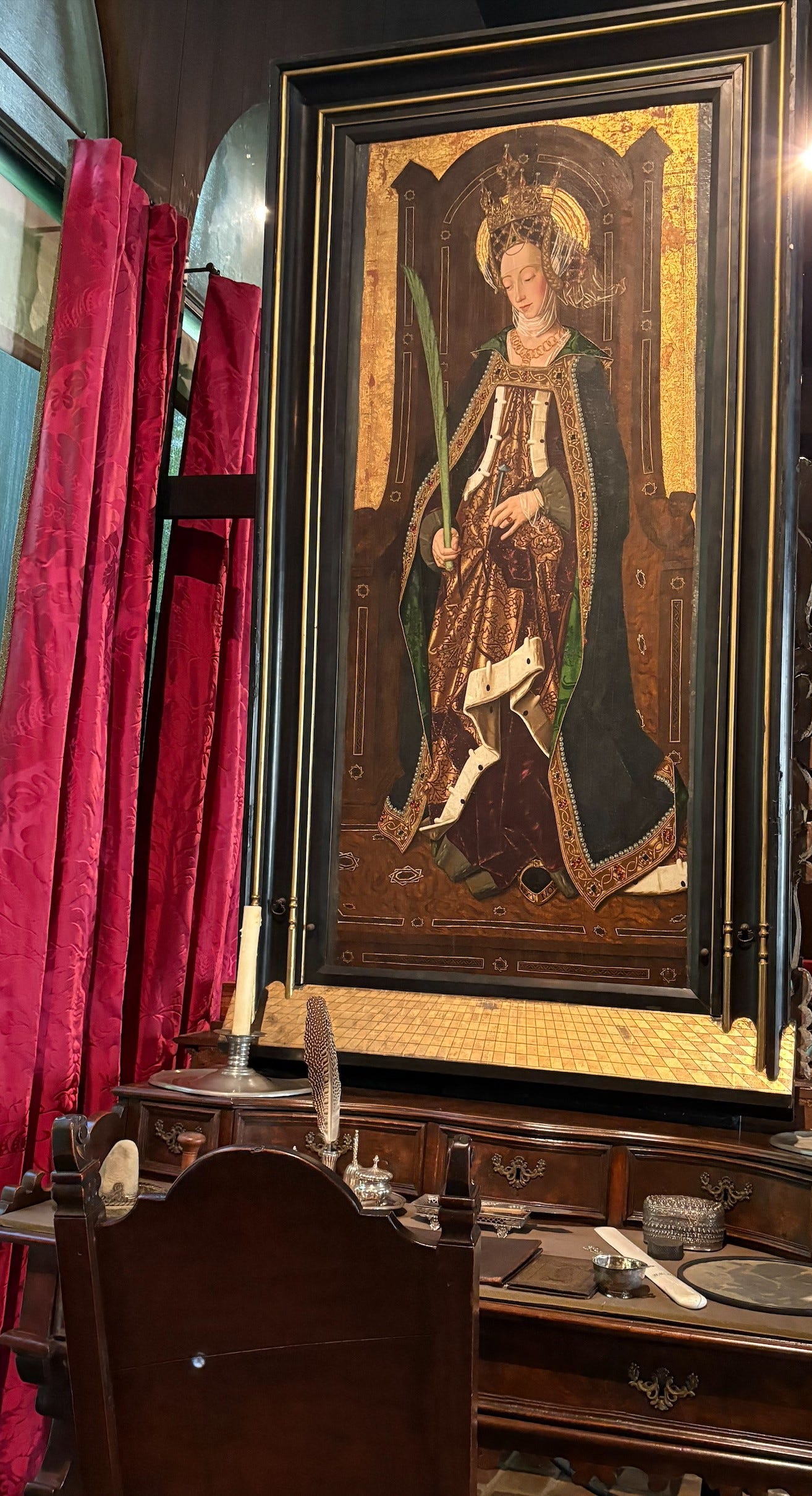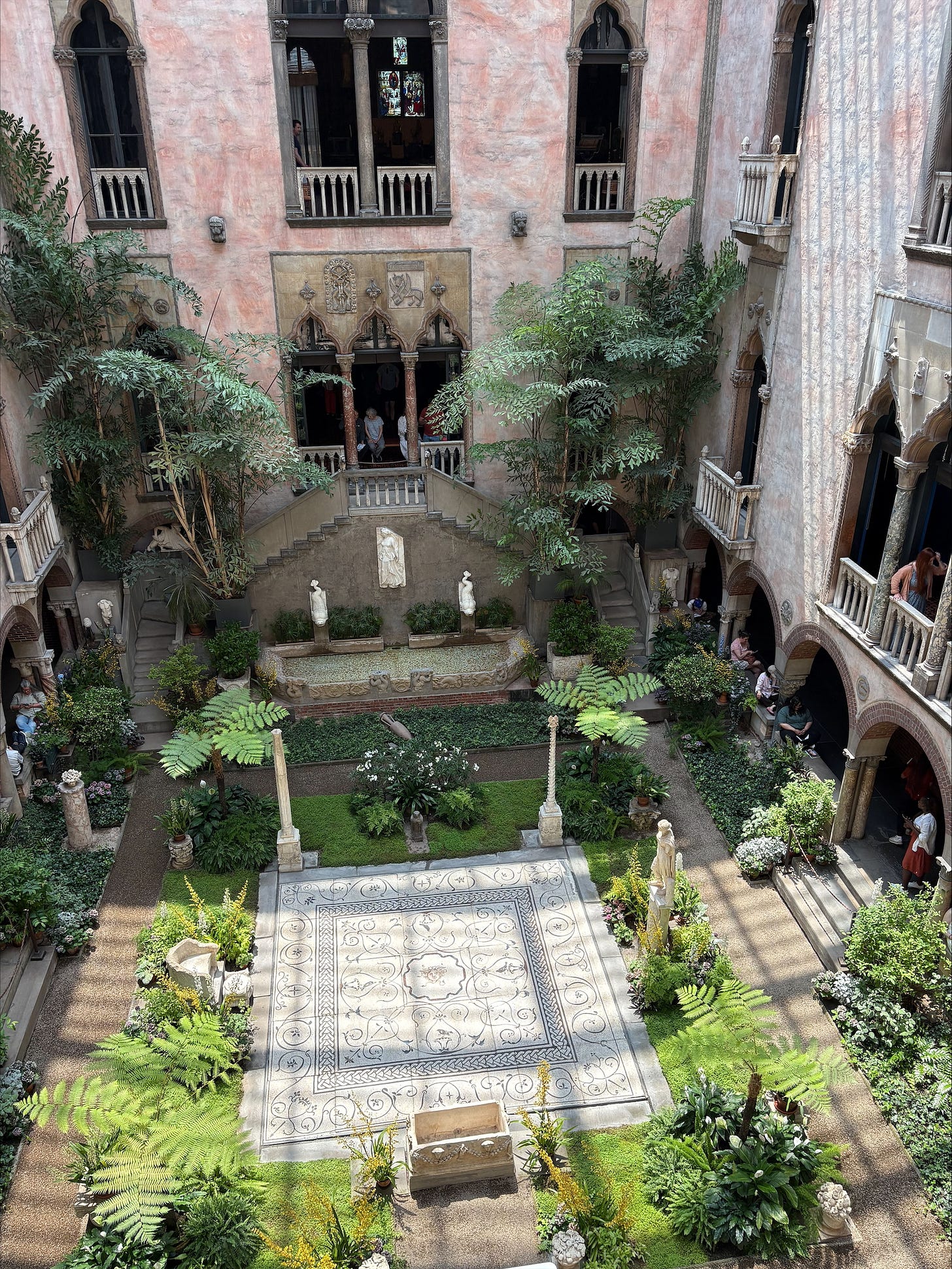Isabella and I would have been great friends, I like to think. Isabella Stewart was born into an affluent New York family in 1840. Her father, David Stewart, was an importer of Irish Linen, as well as other things, whose wealth grew with successful investments, though not as vastly as the Morgans or the Fricks! Isabella lived a life of privilege, albeit, it is rumored she once ran away to join a circus. To say she was spirited is an understatement. She attended finishing school in Europe, living in France and Italy, where she was exposed to the world of art - and John Lowell Gardner, Jr. Heralding from a prominent banking family from Boston, he became a successful banker himself. Isabella was just shy of 20 when they married in 1860. Though wealthy and not wanting, they sustained a grievous blow when their two year old son, John Lowell Gardner III, Jackie, died of pneumonia when he was only two. A subsequent miscarriage spiraled Isabella into a depression. Upon the advise of her doctor, she and her husband toured Europe and Russia. It was the beginning of their traveling and collecting pursuits. They both developed a passion for art and both had a philanthropist's heart. Together, they dreamed of creating a building that would house all their worldly collections, which included windows, doors, panels, tapestries, Catholic relics, as well as famous paintings.
After inheriting $2.75 million from her father at his time of death, Isabella and Jack set out to build their dream. They intended to purchase land in the newly filled in fens of Boston but Jack died suddenly of a stroke in 1898. Isabella pursued their dream by purchasing the land and hiring William Sears as her architect. Apparently, she was a hand’s on client, showing up at the construction site everyday, directing most everything - at the apparent frustration of the construction managers! Fenway Court was modeled on the Renaissance palaces of Venice, boasting four floors and an open air courtyard. She moved her residence to the fourth floor and began, personally, to arrange and curate the lower three levels with her acquisitions. She opened her treasures to the public in 1903; after her death in 1924, she left a museum for “the education and enjoyment of the public forever.” Hence, the Isabella Stewart Gardner Museum.
A good friend took me to the Isabella Stewart Gardner Museum yesterday. Knowing I’d been waiting to go for years now, she took me there for my birthday. It was every bit as impressive and awe inspiring as I’d imagined it. Admittedly, it was a bit overwhelming - my gosh to think of her traveling, buying, and requiring transport of treasures of all imaginable sorts - as relics, medieval texts, painting, and tapestries, as well as architectural structures and remnants, adorned every space available. Then there were the scores of letters from writers, actors, artists, presidents and the like displayed in glass cases, not to mention the rare and antiquarian books.
Everybody who was anybody wanted to know and be known by Isabella. I want to know her 100 years posthumously! She was an intellectual, celebrating music, art and horticulture. She was particularly partial to the artist John Singer Sargent, who painted her portrait in 1888, as well as “Mrs. Gardner in White” in 1922, after she had suffered a stroke and slightly before her death.
Yesterday was just an introductory visit; I think I need to go back a few more times to comprehend it all. Nothing was labeled; references and guides were provided on the phone from room to room, floor to floor. I found that a bit distracting, though will be more prepared my next visit. I quit trying to learn about everything, leaning instead toward just taking in my surroundings, the beauty, the antiquity, architecture and history around me. I was drawn to a few pieces, striking in their beauty, their similarities and stories. I was brought up short as my eyes fell on this beauty, “La Gitana” painted by Kronberg in 1920. I felt as if I knew her; I felt related to her. La Gitana is a reference to gypsies in Spain and Italy; they now prefer to be known as Roma/Romani. They are nomads and travelers. I felt as if I knew “La Gitana” because the story goes that my mother’s people were Romani, as recently as my great-grandmother. Who knows? My brother and I always quipped our wanderlust was a result of our gypsy heritage. Regardless, this painting spoke to me.
Saint Engratia grabbed my attention, as well. Her serene face belies her story: she was an 8th century martyr, tortured by the Moors for her Christian faith. Despite persecution, she demonstrated steadfast faith and was canonized by the Catholic Church. I loved the emerald color of her robe but my heart went out to her when I learned her backstory.
It seems I was drawn to paintings depicting women being mistreated by men and those in power. I was most distraught upon seeing the “Rape of Europa” by Titian, his ‘telling’ of a lovesick God (sometimes referred to as Jupiter and sometimes as Zeus) disguising himself as a white bull in order to kidnap Princess Europa. Troubling indeed - I did not get a picture but you are welcome to look it up.
I am grateful for my very dear friend and her generous gift of taking me to the ISG Museum and treating me to lunch in their cafe’. It was a grand day - just what we both needed! We are into June and I have worked out much since my last writing; thank you for your understanding that I needed time to sort things. I am lighter of heart and have been reveling in every day June has delivered to date; I plan on continuing that trend.
I leave you with a picture of the courtyard taken from the third floor. I hope you enjoyed learning a bit about Isabella; she sounds like quite a woman, living life large!
Remain curious. Be well, be kind. As Always With Love







What a wonderful day! I visited that museum a few years ago and thoroughly enjoyed it.
So glad you had such a nice birthday 🎂
What a lovely gift! Happy Birthday!